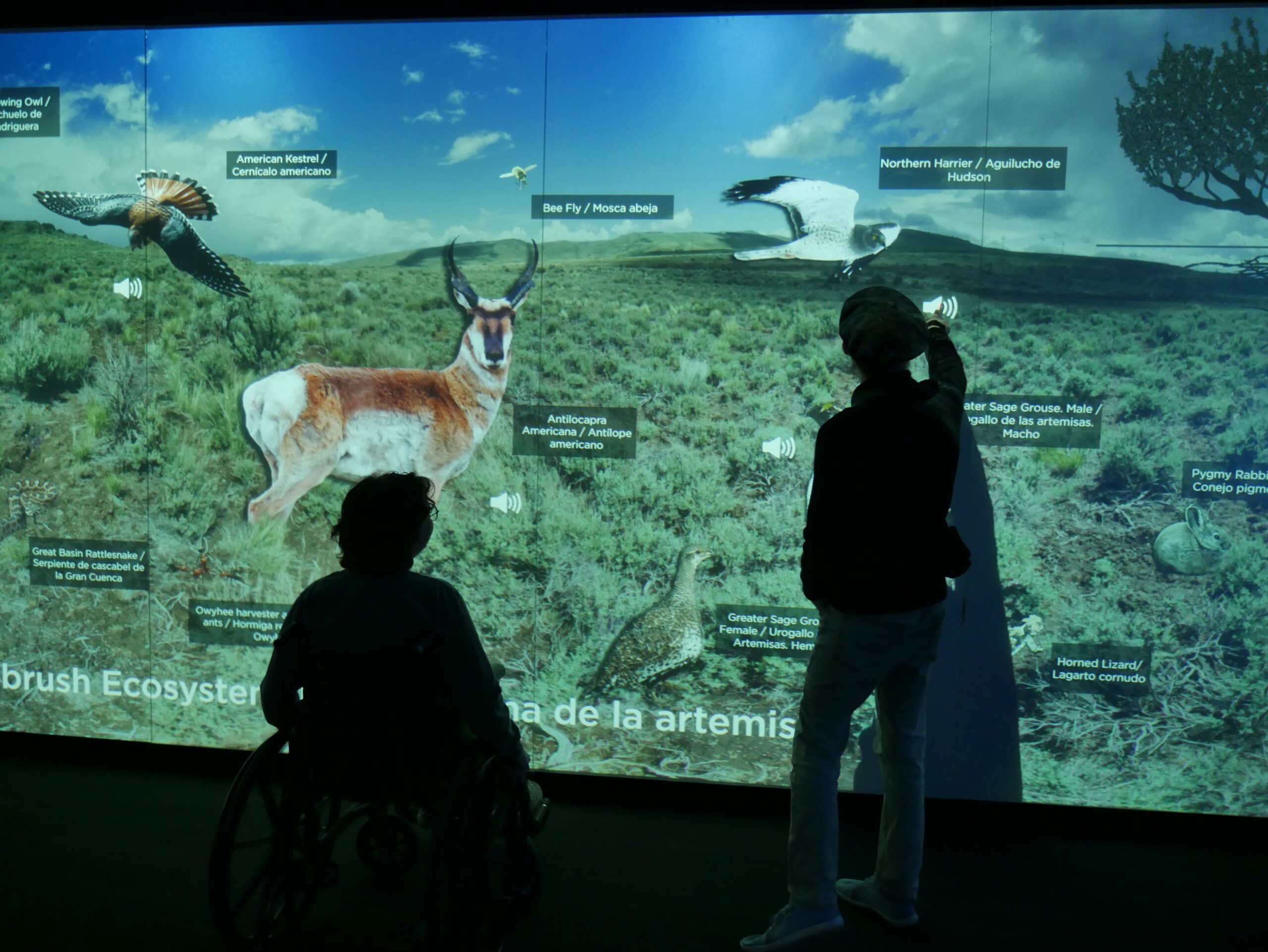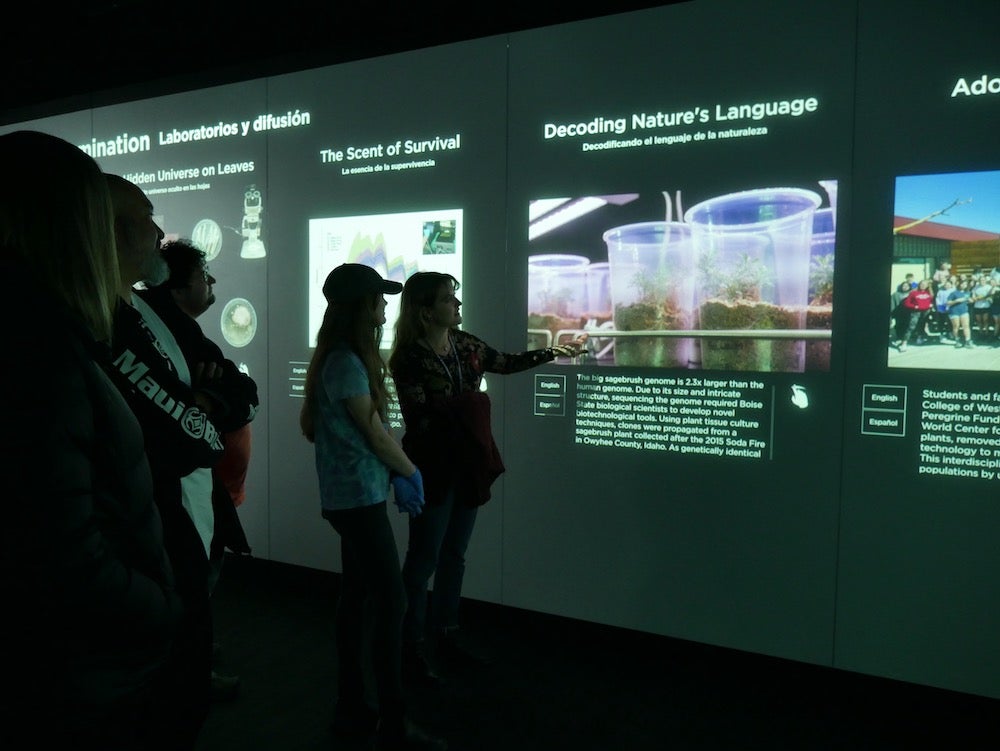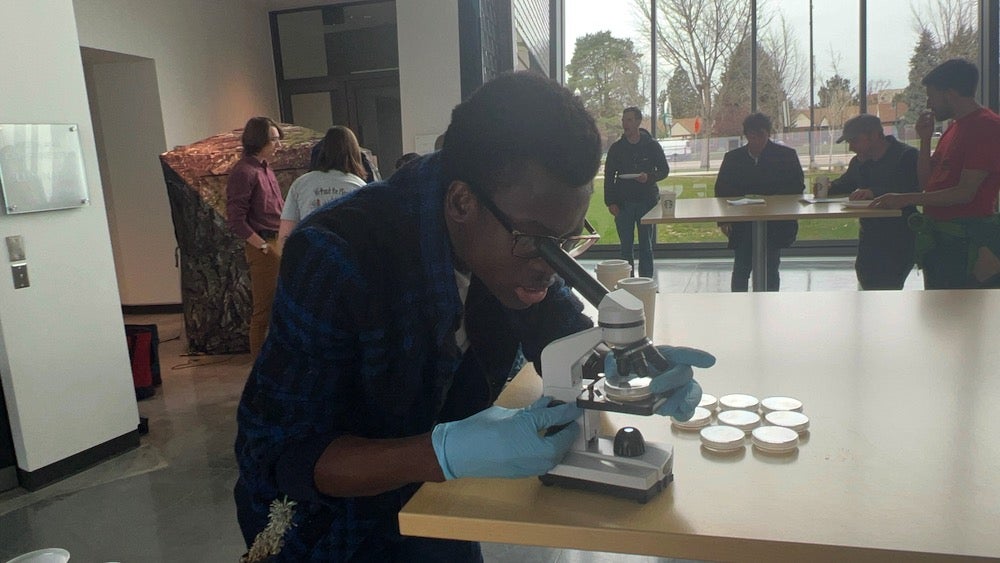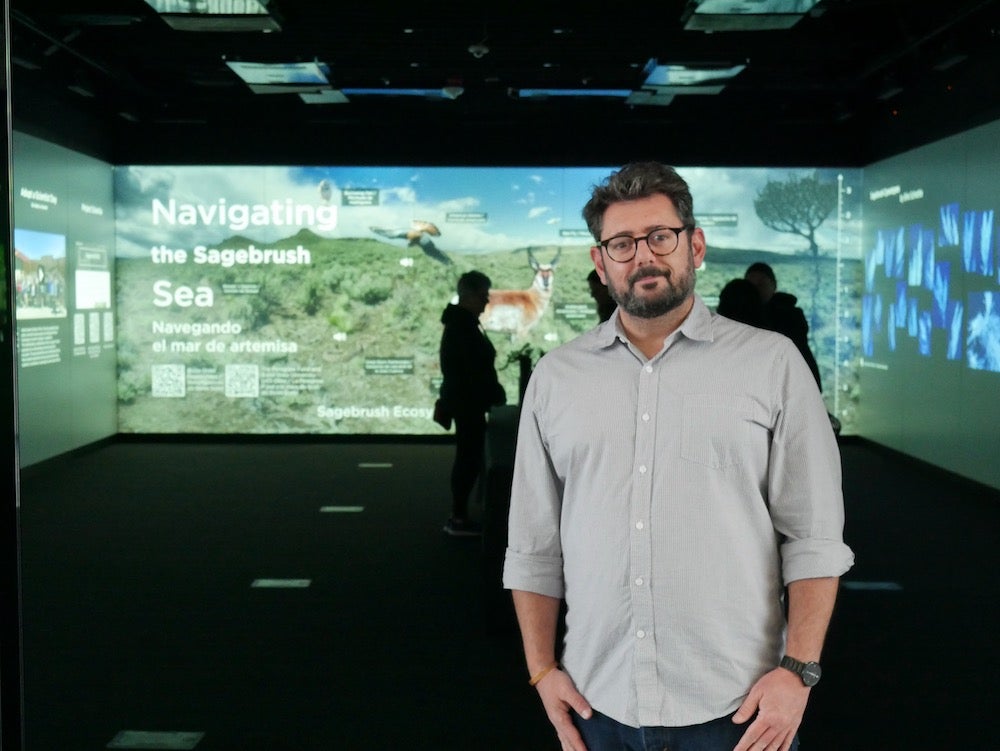
Amidst the sweeping sagebrush landscape, an alert pronghorn stared down visitors. Overhead, an American kestrel screeched. Nearby, a puffed-up greater sage grouse heaved a call from his vocal sacs. And underfoot, a Great Basin rattlesnake’s rattle sent shivers down visitors’ spines.
These sights and sounds were all part of an immersive art-science fusion. “Navigating the Sagebrush Sea” was on display from March 25-29, 2024 at Boise State’s Keith and Catherine Stein Luminary. The mission: to bring sagebrush research to the public. The animals, which all rely on the sagebrush, served as an entry point.
“Those creatures are charismatic and that’s attractive,” said Jen Forbey, a professor of biology and leader of the project. “Once you get people into that, if you can embrace the whole system – bring the plants and the soils along – you can get people more interested in the science.”

Inside the dark hall, a brilliant blue glow – real photos of fluorescing sagebrush branches – illuminated the space. Visitors swiped through floor-to-ceiling touch screens displaying photographs and charts illustrating five years’ worth of research. During its March event, 80 visitors attended the reception and 150 viewed the exhibit over five days.
Idaho researchers have studied the sagebrush steppe in incredible detail – from sagebrush genetic codes and chemistry to the microbes, mammals and birds that call these under-appreciated aromatic shrubs home.
But beyond the basics, Forbey said researchers are also asking big questions. How do you keep wildlife around? How do you keep game species functioning? How do you make sure the hunters still want to come to Idaho? How do you make sure that the landscape isn’t overrun with invasive plants?
Forbey said the landscape is changing at alarming rates, so it’s critical to engage the public.
“A lot of people probably drive through the dirt roads of Idaho and look past the sagebrush,” Forbey said. “To do all of the conservation and restoration to keep our working lands working you have to have the public engaged.”
Out in the foyer, visitors donned purple lab gloves and did some science of their own. They crushed sagebrush leaves to see which ones glowed blue. They plucked individual sagebrush leaves, doused them in water, vortexed them to rinse off the communities of microbes, and then spread those microbes on agar plates. They looked at pre-grown plates under microscopes.
“It’s a really good opportunity for people in Boise to come in and see in a relaxed environment what kind of research has been going on with sagebrush,” said Adedotun Arogundade, a master’s student in biology who hosted one of the hands-on experiment tables. “We know how important sagebrush is to the culture of Idaho and a goal of ours is to communicate our work to the public so this is a very good opportunity for us too.”
The public agreed.

“I’m an outdoor educator and we explain sagebrush steppe ecology to visitors,” said Brendan Blowers de León, a visitor who heard about the event from a master naturalist class. “It’s just cool to see people – students and instructors – studying this stuff and learning more about it. Because I know it’s important to the Idaho ecosystem.”
Manuel Gómez Navarro, an adjunct professor in world languages, curated the exhibit and ensured it could be presented bilingually. All written elements were available in English and Spanish thanks to undergraduate students involved in Project Scientia, a program aiming to provide science communications in Spanish.
“It’s an exhibition open to the public, and the more languages the better,” Gómez Navarro said.
Lisa Hunt, interim director of the Luminary, was supportive of that mission.
“One of the barriers to getting into science for non-native English speakers is not being able to converse about the science,” Hunt said. “That’s what this project is doing so well – lowering that threshold and allowing more access to the work. And that’s what the interactive and immersive experience does. It reaches all ages and all learners of different levels.”

“Many of our diverse groups are out on this landscape and we need to make sure that our public land and its ecosystem and the organisms within it are accessible to everybody,” Forbey said.
Gómez Navarro’s favorite part of curating the exhibit was working with all the teams.
“People in science, people in arts, working with the Luminary staff.” There were plenty of technical issues to problem solve and more ideas than he could implement, but he loved it. “I have more tricks in mind for next time,” he said. “I’m already thinking about the next exhibition.”
The “Navigating the Sagebrush Sea” exhibit is available to view upon request. Contact luminary@boisestate.edu to learn more. This exhibit and hands-on event were made possible with funding from many sources, including the Idaho EPSCoR GEM3 grant and the National Science Foundation.